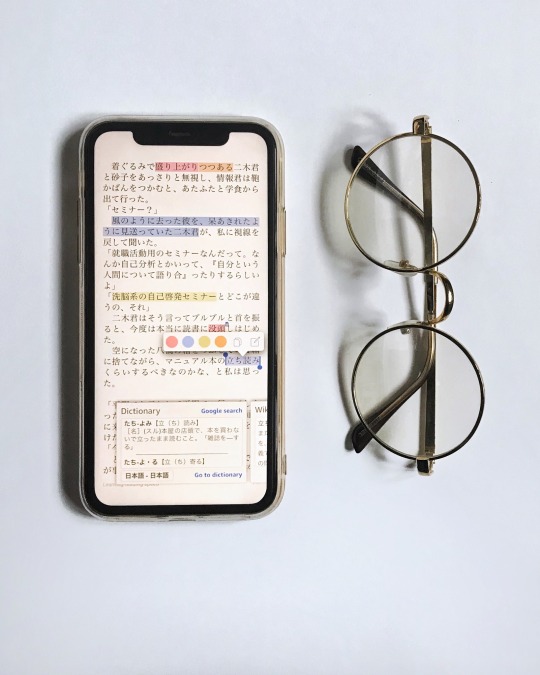Text
Random Ōkami vocab (japanese)

毛むくじゃら 「けむくじゃら」 - hairy, fuzzy
慈母 「じぼ」 - affectionate mother
稽古 「けいこ」 - practice, trainning
師範 「しはん」 - teacher, instructor
指南 「しなん」 - instruction (in martial arts), coaching
鍛錬 「たんれん」 - toughening, training
幾星霜 「いくせいそう」 - many months and years
塵界 「じんかい」 - this drab world
物干し竿 「ものほしざお」 - pole on which to hang laundry for drying
くねくね - wiggling, swaying
物々しい 「ものものしい」 - impressive, imposing
蔓延る 「はびこる」 - to grow thick, to spread
呪縛 「じゅばく」 - binding spell
餌食 「えじき」 - prey, victim
奥義 「おうぎ」 - secret techinques (of a skill/art)
通力 「つうりき」 - mysterious power
給わる 「たまわる」 - (sonkeigo) to bestow, to give
流離 「さすらい」 - wandering (exile, lifestyle)
- - - -
四字熟語/yojijukugo :
問答無用 「もんどうむよう」 - there being no use in arguing (about it)
古今無双 「ここんむそう」 - unparalleled in history
164 notes
·
View notes
Link
A new, wide-ranging, multi-faceted learning brand has been announced, offering the most comprehensive approach to learning Scottish Gaelic in a generation.
SpeakGaelic will launch from September 2021 with a course, a dedicated on-demand learning website and complementary programming across BBC ALBA platforms, including BBC ALBA YouTube, ensuring international availability.
***
The landing page can be found here.
172 notes
·
View notes
Photo

Chapter 9
ユポ [yupo] - older brother
サポ [sápo] - older sister
マタキ [mátaki] - younger sister (said by older sister)
シノッ [sinót] - to play
ロ [ro] - let’s…
ウコカリㇷ゚カチウ [ukókaripkaciw] - ukokaripkaciw, a game with loops
シㇼウェン [sírwen] - the weather is bad
レラ [réra] - wind
ユㇷ゚ケ [yúpke] - strong
エアイカㇷ゚ [eáykap] - can’t, not (to be) able to
カルタ [karuta] - karuta
エシノッ [esínot] - to play with
アイヌ イタㇰ [áynu itak] - Ainu language
エラムアン、エラムオカ [erámuan, erámuoka] - to understand, to know
エアㇱカイ [eáskay] - can, to be able to
マタパ [matápa] - younger sister (said by older brother)
ネ [ne] - that
ランケ [ranke] - to do many times
クルマ [kuruma] - car
カラオケ [karaoke] - karaoke
チキ マㇰ ネ ルウェ アン?[ciki mak ne ruwe an] - How about..?
シノッチャキ [sinótcaki] - to sing a song
エチオカ [ecioká] - you (two)
エヤイコプンテㇰ [eyáykopuntek] - to be delighted, to be glad, to be pleased
60 notes
·
View notes
Text
Ateji 当て字
Aside from 音読み (おんよみ) and 訓読み (くんよみ), there is a type of kanji reading called 当て字. This reading is the phonetic reading of a character, and there are three types.
1) The first type are words that use the phonetic reading of the characters. This is common in the kanji names of foreign countries. The names of countries were written using kanji that matched the phonetic pronunciations. The shortened versions today come from those original names.
America was written 亜米利加 (あまいりか) ➡ 米国 (べいこく) - rice
France was written 仏蘭西 (ふらんす) ➡ 仏国 (ふっこく) - Buddhism
Thus, the kanji associated with these two countries don’t necessarily relate to the countries themselves, but to the 当て字 used to write them. Most country names are now written in katakana.
America 亜米利加 (あまいりか) ➡ 米国 (べいこく) ➡ アメリカ
France 仏蘭西 (ふらんす) ➡ 仏国 (ふっこく) ➡ フランス
Portugal 葡萄牙 (ぽるとがる) ➡ ポルトガル
寿司 (すし) is also an 当て字 word, which is why the word is made up of the characters for longevity and government official.
2) The second type are words that borrow the meaning of the characters but not the reading. These words derive from words that existed in Japanese before kanji were conscripted, and since there was no existing character for that word they borrowed a different kanji.
Tobacco (煙草 - たばこ) is made up the characters for smoke and grass, and the reading matches the loanword from the Portuguese, who brought it to Japan. Today it’s normally written in katakana.
Shrimp (海老 - えび) and seaweed (海苔 - のり) are also this type of 当て字.
3) The third type of 当て字 use both the reading and the meaning of the word. This comes from kanji that already matched the reading and meaning of words (usually foreign).
合羽 (かっぱ) is the one that you usually learn in Japanese class. This word means raincoat and was introduced by the Portuguese (capa). The kanji for join and wings were selected to make this word - apparently it reflects a bird’s wings coming together to protect from the rain - and the reading already matched.
Today, most foreign loanwords are written using katakana, so 当て字 words are usually from before the Meiji Era. Most country names and words like tobacco are written using katakana now, but you still see the kanji names of countries in the news.
当て字 in Names
当て字 is also commonly used in names. When parents select a name for a child, they want auspicious kanji that will match the reading but provide a meaning that will bring luck, make them a good person, or even have an auspicious number of strokes in the whole name.
Personal Note: In my husband’s family, the parents traditionally go to a fortune teller/priest to select a name that matches the future predictions for the child, will bring good fortune, and has an auspicious number of strokes including the last and first name. My husband and brother-in-law both had their names and kanji selected by the priest. My sister-in-law let the priest select her daughter’s name and kanji, but we wanted a particular name for our son and so we told him the name we had in mind and then he selected the kanji that best match the reading and last name. My husband, son, brother-in-law, and niece all have 当て字 in their names because of this selection process.
265 notes
·
View notes
Text
Free Online Language Courses

Here is a masterpost of MOOCs (massive open online courses) that are available, archived, or starting soon. I think they will help those that like to learn with a teacher or with videos. You can always check the audit course or no certificate option so that you can learn for free.
American Sign Language
ASL University
Sign Language Structure, Learning, and Change
Arabic
Arabic Without Walls
Madinah Arabic
Moroccan Arabic
Armenian
Depi Hayk
Bengali
Learn Bangla (Register to see course)
Catalan
Parla.Cat
Speak Cat
Chinese (Mandarin)
Beginner
Chinese for Beginners
Chinese Characters for Beginners
Chinese for HSK 1
Chinese for HSK 2
Chinese for HSK 3 I & II
Chinese for HSK 4
Chinese for HSK 5
Mandarin Chinese Level I
Mandarin Chinese Essentials
Mandarin Chinese for Business
More Chinese for Beginners
Start Talking Mandarin Chinese
UT Gateway to Chinese
Intermediate
Intermediate Business Chinese
Intermediate Chinese Grammar
Mandarin for Intermediate Learners I
Dutch
Introduction to Dutch
English
Online Courses here
Resources Here
Faroese
Faroese Course
Finnish
A Taste of Finnish
French
Beginner
AP French Language and Culture
Elementary French I & II
Français Interactif
Vivre en France - A1
Vivre en France- A2
Intermediate & Advanced
French Intermediate course B1-B2
Passe-Partout
Travailler en France A2-B1
Vivre en France - B1
German
Beginner
Deutsch im Blick
German Project
German at Work
Goethe Institute
Gwich’in
Introduction to Gwich’in Language
Hebrew
Biblical Hebrew
UT Austin
Hindi
A Door into Hindi
Virtual Hindi
Icelandic
Icelandic 1-5
Indonesian
Learn Indonesian
Irish
Irish 101, 102, 103, 104, 105, 106, 107
Italian
Beginner
Beginner’s Italian I
Introduction to Italian
Intermediate & Advanced
AP Italian Language and Culture
Intermediate Italian I
Advanced Italian I
Japanese
Genki
Japanese JOSHU
Japanese Pronunciation
Marugoto Courses
Tufs JpLang
Korean
Beginner
First Step Korean
How to Study Korean
Introduction to Korean
Learn to Speak Korean
Pathway to Spoken Korean
Intermediate
Intermediate Korean
Norwegian
Introduction to Norwegian I, Norwegian II
Norwegian on the Web
Persian
Easy Persian
PersianDee
Polish
Online Course
Portuguese
Pluralidades em Português Brasileiro
Russian
Beginner
A1 Course
I speak Russian
Intermediate
B1 Course
B1+ Course
B2.1 Course
B2.2 Course
Spanish
Beginner
AP Spanish Language & Culture
Basic Spanish I, Spanish II
Spanish for beginners
Spanish for Beginners 1, 2, 3, 4, 5, 6
Spanish Vocabulary
Advanced
Corrección, Estilo y Variaciones
Leer a Macondo
Swahili
Online Course
Turkish
Online Course
Ukrainian
Read Ukrainian
Speak Ukrainian
Welsh
Beginner’s Welsh
Discovering Wales
Yoruba
Yorùbá Yé Mi
Multiple Languages
Ancient Languages
More Language Learning Resources & Websites!
Last updated: May 2019
214K notes
·
View notes
Text

Sanseidō’s Top 10 New Words of the Year for 2020
ぴえん — Pien. Mainly used among young people on social media to express tears due to light unhappiness or disappointment, although it can also represent happiness or deep emotion.
〇〇警察 — – Keisatsu. The self-appointed “police” who set themselves up to check that everyone else is following rules and requests, like wearing masks and staying indoors.
密 — Mitsu. It has been a year to avoid “close” or “crowded” places, as in the ubiquitous san mitsu (three Cs) phrase.
リモート — Rimōto. From school to work to leisure time, much of our lives has been “remote” this year, conducted via the Internet.
マンスプレイニング — Mansupureiningu. The English portmanteau “mansplaining,” deriving from those men who particularly talk down and explain to women, established itself in Japanese this year.
優勝 — Yūshō. Not a new word in its standard meaning of “championship win” or “victory,” this started being used to describe a “really good” experience.
ごりごり — Gori gori. Used to describe someone “fanatical” about one particular thing, this may be positive in tone.
まである — Made aru. When something exceeds one’s own expectations, this phrase comes into play. For example, the phrase kōcha dokoro ka, kēki made aru becomes in English, “there’s not just tea, there’s even cake.”
グランピング — Guranpingu. Glamorous camping with spacious tents, well-equipped facilities, and gourmet food provided becomes “glamping” in this Japanese term.
チバニアン — Chibanian. The geological era, which covers the period from around 774,000 to 129,000 years ago, was ratified by the International Union of Geological Sciences in January 2020. It takes its name from the decision that a stratum at a location in Ichihara, Chiba Prefecture, is the most important reference point for studying the period boundary about 770,000 years ago.
580 notes
·
View notes
Text
Thai Alphabet and Pronunciation Guide (Consonants)
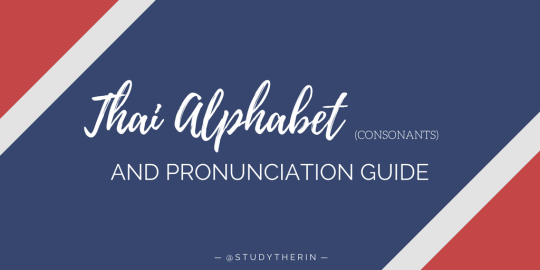
thai alphabet consists of 44 consonant letters, and 21 vowel symbols with 32 vowel sounds. here i’ve listed down the 44 consonants with their identical sounds in english. and the symbols in the parenthesis are their coordinate ipa.
ก (k) : gala, games, goat, garlic, gun
ข (kʰ) : car, cry, calm, kin, candy
ฃ (kʰ) : can, could, because, kind, coffee *obsolete*
ฅ (kʰ) : cold, crab, keen, cup, care *obsolete*
ค (kʰ) : come, colony, carry, keep, call
ฆ (kʰ) : command, clock, cake, key, climb
ง (ŋ) : thing, cling, strong, painting, bring
จ (tɕ) : jewellery, judge, joke, enjoy, just
ฉ (tɕʰ) : chew, show, shark, shallow, pressure
ช (tɕʰ) : sharp, shadow, cheese, shine, should
ซ (s) : sell, seal, someone, solo, sing
ฌ (tɕʰ) : choke, shake, shore, shall, shame
ญ (j) : yellow, yard, yarn, yes, yam
ฎ (d) : damp, dull, dream, dog, dark
ฏ (t) : similar to ㄸ in korean, d in chinese (弟弟、豆腐、大、打)
ฐ (tʰ) : team, teal, tan, tomb, tamarind
ฑ (tʰ) : total, torch, tool, tin, time
ฒ (tʰ) : tone, tear, teen, trade, tech
ณ (n) : know, now, need, no, night
ด (d) : don’t, dance, deal, door, doom
ต (t) : similar to ㄸ in korean, d in chinese (弟弟、豆腐、大、打)
ถ (tʰ) : tell, to, take, towel, tea
ท (tʰ) : trap, tower, troop, two, true
ธ (tʰ) : talk, try, toddler, tail, town
น (n) : never, new, nine, nanny, numb
บ (b) : about, break, brand, business, breathe
ป (p) : similar to ㅃ in korean, b in chinese (爸爸、笔、帮、拜)
ผ (pʰ) : pen, park, proud, play, plan
ฝ (f) : far, feel, fly, find, fin
พ (pʰ) : penny, power, paw, pebble, paper
ฟ (f) : for, fool, freedom, reflect, flower
ภ (pʰ) : people, party, pyjamas, place, pan
ม (m) : million, miles, me, more, moment
ย (j) : yank, you, yawn, year, youth
ร (r ) : the ร sound is neither american nor chinese r. it’s similar to the one in spanish, italian, russian, tagalog, etc.
ล (l) : love, alone, lay, lie, light
(do take note that in informal conversations, most thai drop the rolling r sound from ร and pronounce it as ล instead)
ว (w) : way, wind, wheel, whale, walk
ศ (s) : start, side, seem, reason, seat
ษ (s) : sun, sand, sky, sea, soul
ส (s) : secret, search, seven, safe, sit
ห (h) : heart, heat, heal, hike, hollow
ฬ (l) : life, lake, loop, lean, low
อ (ʔ) : even, always, apple, amber, army
ฮ (h) : how, hill, hand, hug, house
1K notes
·
View notes
Text
Learn Mandarin with I TOLD SUNSET ABOUT YOU
Part 2.1: 对话
• ────── ✾ ────── •
This time we will be looking at the dialogue spoken in Mandarin in I TOLD SUNSET ABOUT YOU. Bear with me ‘cause it’s gonna be pretty long.

In episode 1, after going on an exam, Teh called his mom and said, “不过,我觉得自己做得还可以哦。” (however, I think I did great.)
不过 means however
自己 means self (myself, yourself)
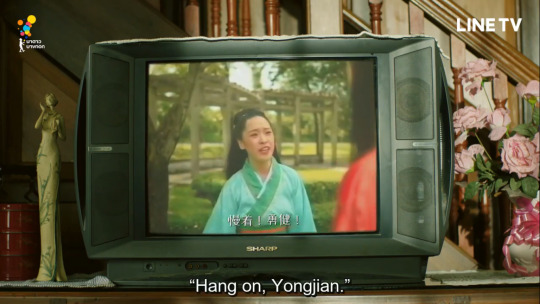
This dialogue of Yongjian and Yuexin is being repeated a couple times: on tv, written on script, and on Oh-aew Chinese new year performance.
“慢着!勇健!” (Yongjian, wait!)
“月欣!让开,我无法原谅你父亲所做之事。背叛者只有一个下场,那就是死!” (Yuexin, move. I can’t forgive what your father did. Traitor only deserve one end, which is death.)
“若你对我父亲下手,便如同你也杀了我一样。” (if you kill my father, it would means that you killed me too.)

On this scene here, Teh’s mom doesn’t speak Mandarin, but I just want to point out that she calls the customers as “ko, cik” which, I assume, is the Thai people’s way to say 哥哥 (older brother)and 姐姐 (older sister). This kind of pronunciation comes from the original Mandarin language, but the pronunciation evolve with the local language. As far as I know, ko and cik is also widely used in Indonesia, Malaysia, and Singapore.

When Teh and Ko Hoon arrived home, mom said “妈妈的两个小英终于来了。” (Mama’s two little heroes finally come home.)
Ma called his two boys 两个小英 which means two little heroes ><

Student will call the teacher 老师 regardless of their gender. 老师 simply means teacher. On the first meeting, I heard laoshi said few sentences in Chinese, but I can’t catch it clearly since it’s smashed with the music. He said “做好”(sit down) and “今天是第一堂课高考补习班的。。” (Today is the first class of admission exam preparation class)
高考 means university admission examination
补习班 means class that you attend after school or cram school

Here there’s a little dialogue between Teh and his mom.
“怕考不上吗?不用着急。反正考都考完了。” (are you afraid you won’t get admitted? Don’t worry. The exam is over afterall)
”看也不顺眼,听也不顺耳。“
I have a hard time to translate this sentence. It literally means not pleasing to the eyes, not pleasing to the ear either. In this context, it is used to describe something that doesn’t sit right with your heart.

When Oh-aew came for tutoring, Ma said to Teh “教了朋友书。自己也要预习多。”(now you already teach your friend.(Don’t forget) You yourself (still) have to study.”
教书 means teach
预习 literally means preview. There are many ways to say study: 学习、读书、预习、复习. This particular word that Ma used means that she told Teh to study more, study to prepare for future classes.

放心 = rest assured

关心 = to care

伤心 = sad
What’s interesting about this scene is that they’re guessing flashcards for words that contain 心 (heart). We know that this scene is when Teh is feeling confused and sad because Oh-aew consider him the same as other friends. His heart felt so many emotions just like written on the flashcards, and lastly he feels ‘伤心’ sad right now.
The tips that he gave about memorizing this word is also interesting because it connects so much with the emotion that he’s feeling right at that moment. “Just think about these two character, their roots are from human (人). Plus 力 means force. And this word 心 which means heart. When these two combine, it’s like two people using force against each other’s hearts, which means ‘sad’.”
That’s such a beautiful way to remember 伤心 :)
• ────── ✾ ────── •
Happy learning!
加油!
92 notes
·
View notes
Photo
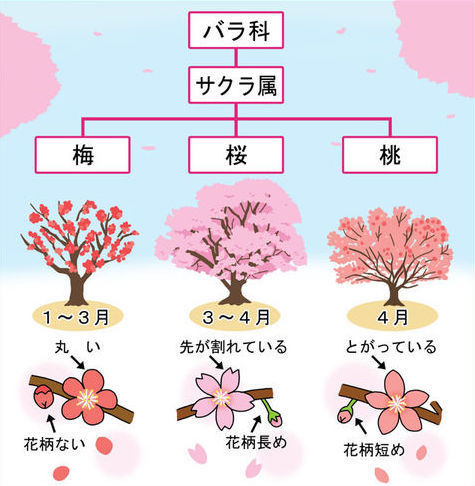
「梅・桜・桃」の違い、わかりますか?
どれもバラ目バラ科サクラ属の植物なので、似ているのも当然です。種類によっては例外もありますが、見分けるポイントは花の付き方と花びらの形、そして咲く時期です。
__
Differences between:
Ume / 梅 / plum blossom
Sakura / 桜 / cherry blossom
Momo / 桃 / peach blossom
These Rosaceae family of flowers are all culturally cherished throughout history of Japan, symbolising the beginning of new year and spring. Yet they are often confused!
Here are some tips: plum blossoms as early as January with round petals; cherry blossoms March to April and have a small split at the end of each petal; peach blossoms in April and have pointy petals.
4K notes
·
View notes
Text
Period in 中文 🩸

月经 (yuè jīng) period
老朋友 (lǎo péng you) period (slang)
大姨妈 (dà yí mā) period (slang)
例假 (lì jià) menstrual leave (euphemism) , menstrual period
月经没来 (yuè jīng méi lái) to miss one’s period
来月经 (lái yuè jīng) to have a period
换… (huàn) to change, to exchange (sanitary towel/tampons/menstrual cup)
卫生巾 (wèi shēng jīn) sanitary towel /pad
姨妈巾 (yí mā jīn) sanitary towel (coll.)
卫生棉条 (wèi shēng mián tiáo) tampons
月经杯 (yuè jīng bēi) menstrual cup
月亮杯 (yuè liang bēi) menstrual cup
绞痛 (jiǎo tòng) cramps
痉挛 (jìng luán) cramps (med. term)
偏头痛 (piān tóu tòng) migraine
昏厥 (hūn jué) to faint
妇科 (fù kē) gynaecology
阴道 (yīn dào) vagina (med. term)
卵巢 (luǎn cháo) ovary (med. term)
荷尔蒙 (hé ěr méng) hormone
乳房 (rǔ fáng) breast (med. term)
乳房胀痛 (rǔ fáng zhàng tòng) tender breast
血 (xuè) blood
子宫 (zǐ gōng) uterus
心情变化 (xīn qíng biàn huà) change of moods
经前综合症 (jīng qián zōng hé zhèng) PMS (premenstrual syndrome)
更年期 (gēng nián qī) menopause
止痛药 (zhǐ tòng yào) Painkiller
热水袋 (rè shuǐ dài) hot-water bottle
~ My Chinese studygram ~
585 notes
·
View notes
Video
youtube
2021 Passion Planner Set Up!!
#passion planner#plan with me#planner#planning#planner set up#planner set up 2021#passion planner 2021#plan with me 2021#plan with me january 2021
2 notes
·
View notes
Text
Since COVID I’ve noticed more Korean teachers posting lessons on Youtube. A lot of them have criminally low views so I thought I would provide some links as I think they would be useful to many of you.
While the lessons are mostly in Korean please don’t be put off. The teachers speak slowly and clearly so even low intermediate learners should have no problem understanding :)
아임달imdal Korean teacher
Grammar and vocab videos both TOPIK specific and more everyday content. Beginner through to high intermediate level. I really like all of the videos I have watched. In some of her videos she sets ‘homework’ and asks viewers to post in in the comments and she will personally mark it for you!
현명한 선택,知好樂
Mainly intermediate level grammar comparison videos (ie, what is the difference between similar grammar points). She takes requests from viewers.
10분한국어 10min Korean
As the channel name suggests most of her videos are around 10 minutes long. Predominately intermediate and advanced grammar lessons but she also has videos on hanja.
베이직 코리안 basic Korean
Beginner content from reading and pronouncing hangul through to basic grammar. Videos are in Korean but have English subtitles.
PARKSSEAM OK-KOREAN
Intermediate level. It seems like she goes through a whole textbook in her videos. There are also TOPIK writing videos.
2K notes
·
View notes
Photo

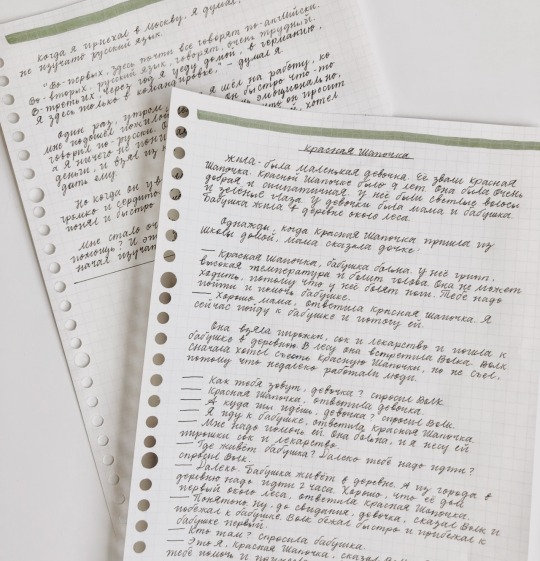





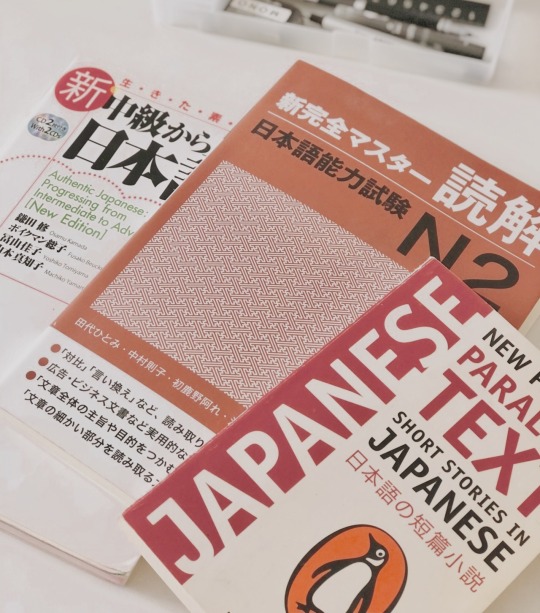
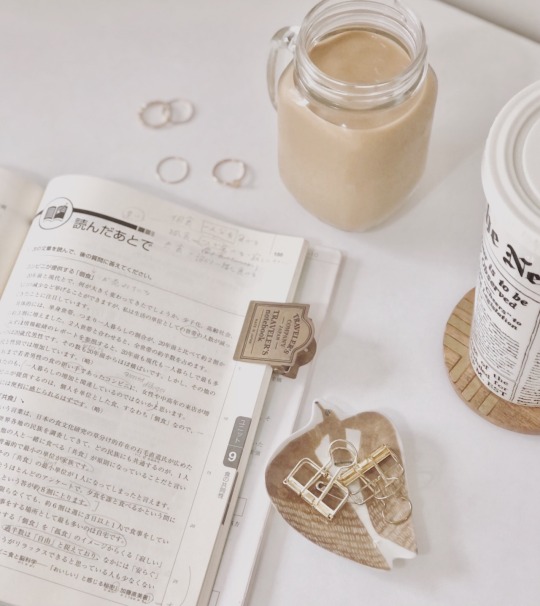
my november in photos / always the beautiful answer who asks a more beautiful question. – e.e. cummings
3K notes
·
View notes
Text
i don’t know why but i’m really amused by the winner of some ‘new kanji’ contest:
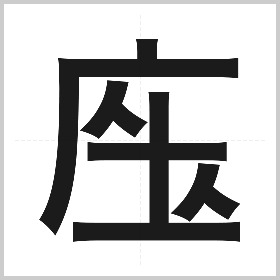
compare with the real kanji

座 (seat/gathering), but the two 人 (person) radicals have been moved from next to each other within the 土 (earth) radical to diagonally from each other, making this “social distance(d seating/gathering)”
92K notes
·
View notes
Photo
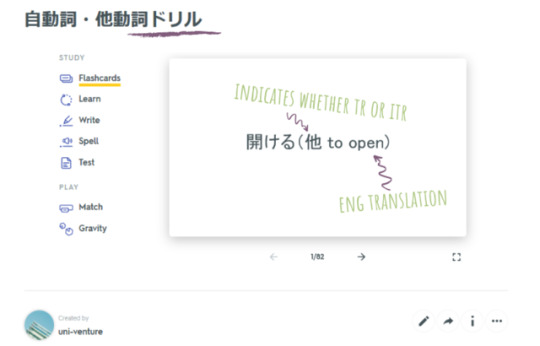
Transitive or intransitive? Verb drill flashcard set!
If you’re anything like me, these pairs of verbs are just finicky to remember. So I made a drill set and added it to the Quizlet study group (you don’t need to be part of the study group to use the flash cards!).
HOW DO
On one side of a card is the transitive verb. On the other is its intransitive counterpart. See card. Try to remember corresponding word. Flip over. Rinse and repeat.
The translations are only there for additional understanding, please remember words have nuances.
Prefer using Quizlet’s Write mode? No worries. Anything inside parenthesis doesn’t count, so you only have to write the word you’re being tested on!
This is drill set for practicing remembering the transitive/intransitive versions of verbs. There are no example sentences.
Hope you enjoy! The link to the flashcard set as well as the Quizlet study group is at the beginning of the post. 皆さん、一緒に頑張りましょう!
167 notes
·
View notes

